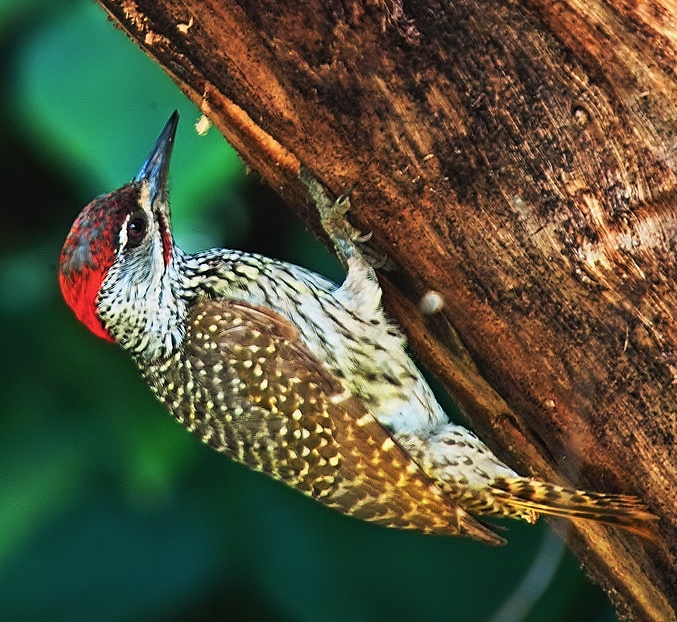 |
| Photo by Arno Meintjes (Flickr) |
Common name:
golden-tailed woodpecker (en); pica-pau-de-cauda-dourada (pt); pic à queue dorée (fr); pito colidorado (es); goldschwanzspecht (de)
Taxonomy:
Order Piciformes
Family Picidae
Range:
This African species is found from Uganda and northern Angola to South Africa.
Size:
These birds are 20-23 cm long and weigh 55-80 g.
Habitat:
The golden-tailed woodpecker is found in riparian woodlands, dry savannas, scrublands, grasslands, rural areas and parks and gardens within urban areas. They are found from sea level up to an altitude of 2.200 m.
Diet:
They probe the branches of trees in search of arthropods such as ants, termites, caterpillars and millipedes.
Breeding:
Golden-tailed woodpeckers are monogamous and may mate for life. They breed in August-December and both sexes help excavate the nest, usually a hole in the underside of a tree branch. The female lays 2-3 white eggs which are incubated by both parents for 13 days. The chicks are fed by both parents and fledge 22-25 days after hatching, become fully independent a few weeks later.
Conservation:
IUCN status – LC (Least Concern)
This species has a very large breeding range and is reported to be locally common to uncommon. The population is suspected to be stable in the absence of evidence for any declines or substantial threats.







